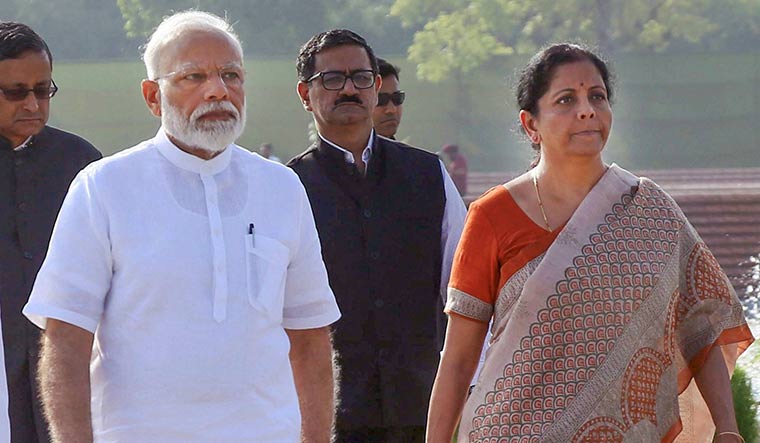With India's GDP growth rate plummeting to an 11-year low, it is high time the Centre disbursed money among the people to script a demand-led economic recovery, rather than concentrating on increasing the supply side of things. There is notably a steep decline in demand, which needs to recover soon if the economy needs to revive.
Economists are batting for more bold measures from the government to kickstart the economy, which was already battling slowdown blues.
“The GDP numbers fully reflect the slowdown, which the economy was going through in the last two years. It also highlights the importance of a demand-led recovery for sustainable future growth. It goes without saying that the number for the first quarter of the current financial year will be much lower bordering on the negative as we get the first estimates after a month. That the core sector output contracted by 38 per cent in April is an indicator of the dent that the lockdown is likely to bring forth in economic activity and the resultant numbers,” said Joseph Thomas, Head of Research at Emkay Wealth Management.
While it was anticipated that the lockdown would severely impact the manufacturing and services activity during the first quarter of the current financial year, the impact of cyclone ‘Amphan’ in the two agriculture states of West Bengal and Odisha, and the attack of desert locusts on agriculture in Rajasthan, Punjab, Gujarat, Maharashtra and Madhya Pradesh were completely unanticipated and is likely to dent agricultural growth during the present quarter.
As per government data released on Friday, India's GDP growth rate was at 3.1 per cent in the fourth quarter and 4.2 per cent in the financial year 2019-20, indicating sluggishness in economic activity. It is expected that the economic situation may not change immediately and it may take a long time to recover.
“We expect the first quarter to record a sharp contraction of over 14 per cent, with only a gradual recovery thereafter. For the year, we continue to expect contraction in GDP (over 5 per cent). Accordingly, expansionary fiscal and monetary response will have to continue to aid the economy,” said Upasna Bhardwaj, Senior Economist at Kotak Mahindra Bank.
Economists also argue that the fiscal stimulus package announced by the Centre earlier this month might not be sufficient to kickstart the economy. “The government liquidity support to the tune of Rs 2.3 lakh crore provided to the farmers through Kisan Credit Card and NABARD would not suffice at this time. There would be rising expectations of cash-in-hand benefits from the government going ahead. The question is, to what extent can the government stretch given India’s fiscal position. At this time, debt monetisation can be considered more earnestly. Globally, countries from Indonesia to New Zealand, are responding to the Covid-induced recession by adopting unorthodox stimulus measures, including printing money, i.e., monetisation of government debt, similar to what the US and Europe did for crisis management a decade ago,” pointed out Dr Arun Singh, Chief Economist at Dun and Bradstreet India.
Things may not change completely and growth will be slow unless there is a fast and complete lifting of the lockdown with safeguards in place especially in the manufacturing segment. “The fact that manufacturing sector has had flat growth for the whole of the last financial year vs 5.7 per cent in the previous year highlights the extent of issues in that sector and prompts faster and thorough measures to kickstart manufacturing given that the first two months of FY21 are washouts and job creation remains a top priority in the current times,"said Dhiraj Relli, MD and CEO of HDFC Securities. "Construction is another sector that needs immediate attention. Agriculture could do well even in the current financial year after growing at 4 per cent in FY20 and lead the sectoral growth in FY21, contrary to its negative contribution in all earlier years of negative GDP growth,” he added.
GDP slowed down across manufacturing, construction and the hotel segment, partly reflecting the sudden halt in economic activity led by the Covid-19 pandemic-related response, which further made the situation grim.



